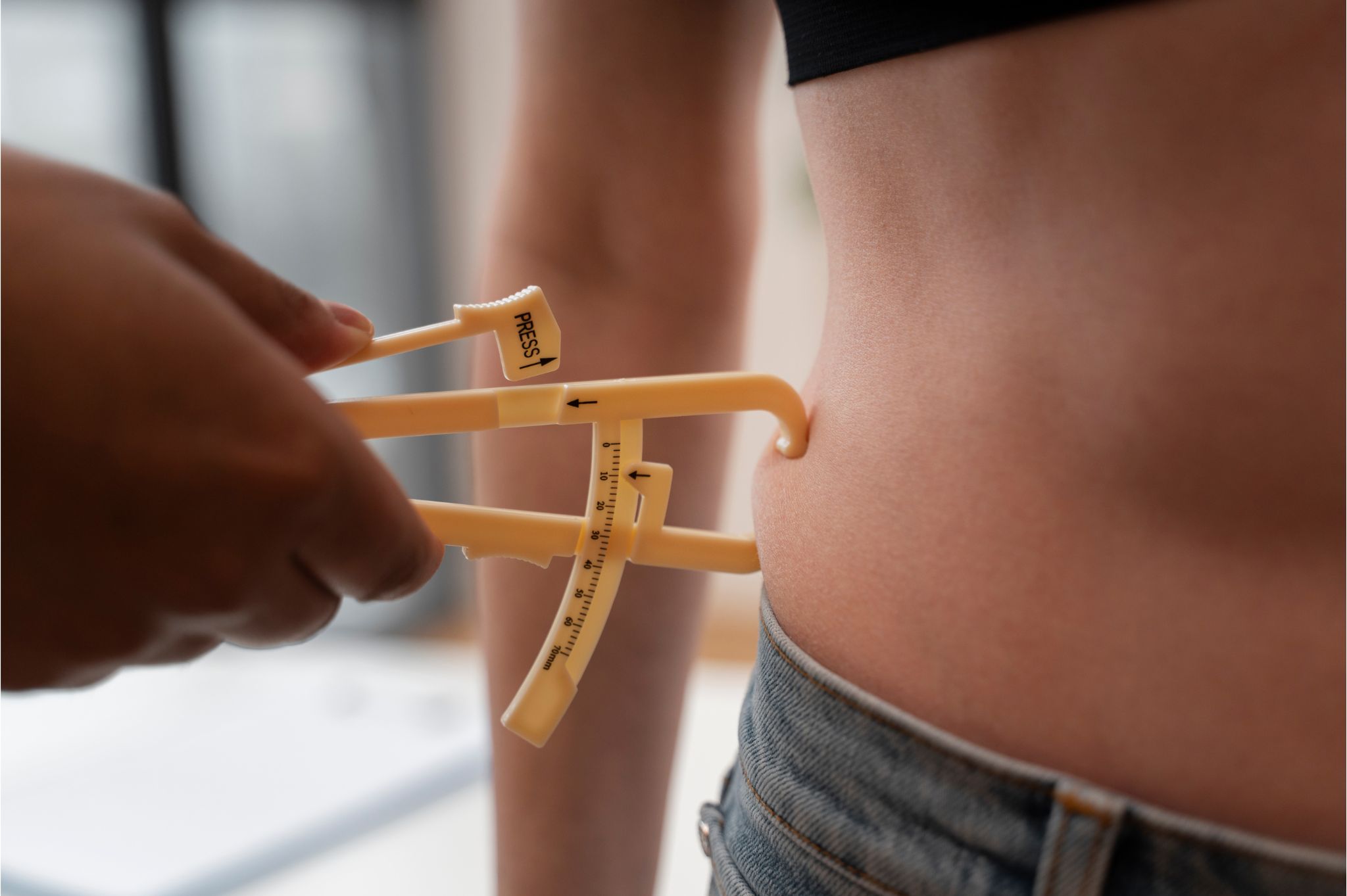
Body Fat analysis
Body fat can lead to obesity and other chronic diseases, such as type 2 diabetes and heart disease.
The conventional body mass index (BMI) only measures total body weight, without taking body fat and muscle mass into account. A very muscular person, for example, may have a low percentage of body fat but a high BMI.
The body stores a large amount of fat directly beneath the skin. Measuring the thickness of skinfolds in different areas of the body can help a person estimate their body fat percentage.
It requires a person to use calipers to measure the thickness of skinfolds. Due to differences in body fat distribution, males and females need to take measurements in different areas.
Males should measure skinfolds on the chest, thigh, and abdomen. Females should measure skinfolds on the triceps, thigh, and just above the hip bone. It is important for people to take the measurements at the same sites each time.
People can then enter these measurements into an online calculator, which estimates body fat percentage.
It is important to note that skinfold measurements vary widely, and body fat distribution can differ, based on race, age, sex, and physical activity.
If you’re concerned about your body fat percentage, you may want to skip the commercially available body fat analyzers. Ask your doctor about the use of more-accurate measurement techniques.
Depending on the circumstances, options may include:
- Dual energy X-ray absorptiometry (DXA). DXA is a specialized X-ray exam. It provides detailed information about the ratio between fat, muscle and bones in specific parts of your body.
- Air displacement plethysmography. With this technique, you’re enclosed in a computerized, egg-shaped chamber (Bod Pod, others). The device measures your weight and volume to determine your body density. Then it uses these figures to calculate your body fat percentage.
- Underwater weighing. This method involves first being weighed on dry land and then while sitting on a special chair lowered under water. Your weight measurements on land and underwater are then used to determine your body density and calculate your body fat percentage.
Dr. Meghana Pande has a strong interest and experience in complicated respiratory, cardiovascular, diabetes, gastrointestinal, endocrine neurological disorders and geriatric health.
She was also on the forefront providing her expertise in the management of covid 19 patients during the pandemic.
She comes with rich experience of 15 yrs in critical care illnesses and management, internal medicine including management of e-ICU and ECMO.
All Department
Opening Hours
| Mon, Wed, Fri | 11:00 AM to 1:00 PM |
| Tues, Thru, Sat | 10:00 AM to 9:30 PM |
| Sundays | off |
Book An Appointment
Quick Contact
Phone Number:
+91 9322304006
Address:
Shop no 35, Bhosale Garden Road, In Front of Sahyadri Super Specialty Hospital, Aru Nagar, Laxmi Vihar, Hadapsar, Pune.



